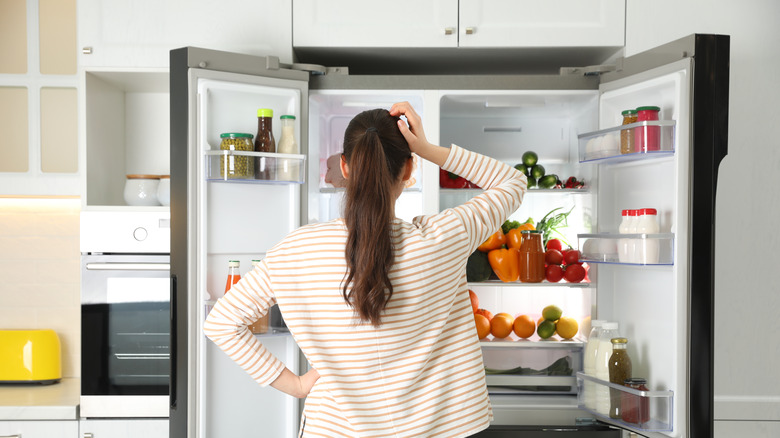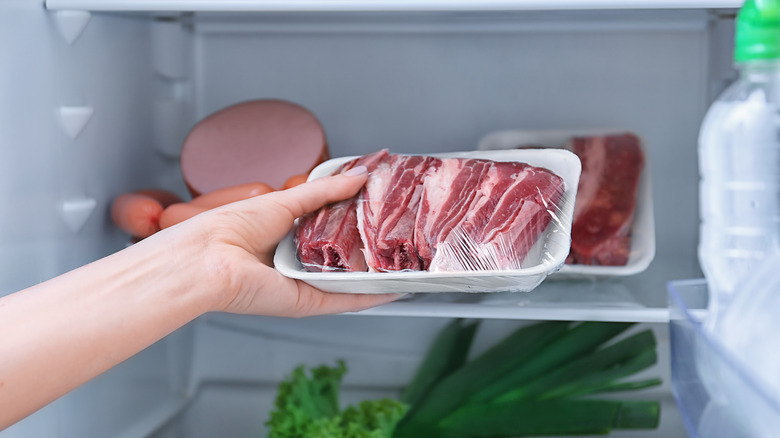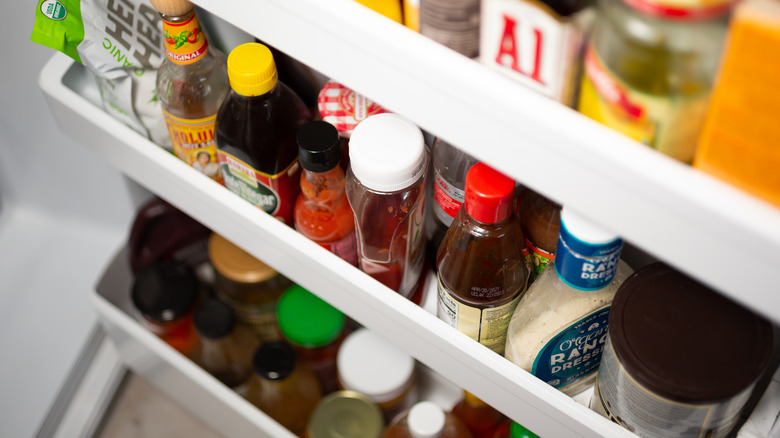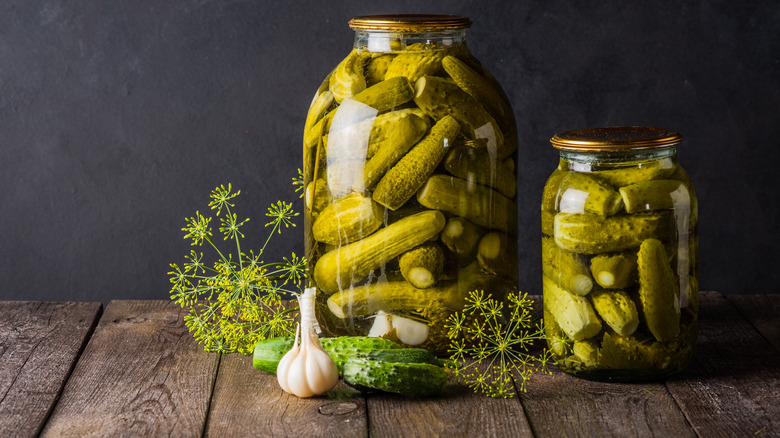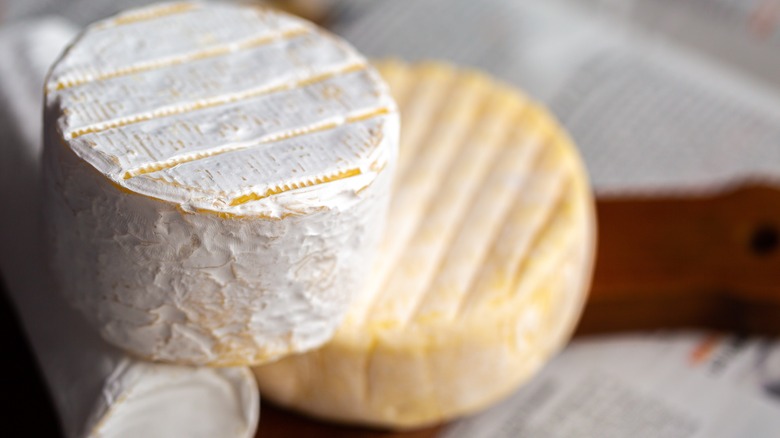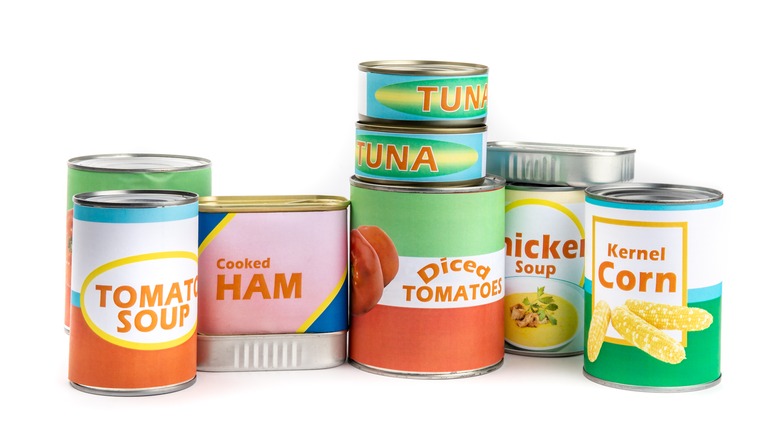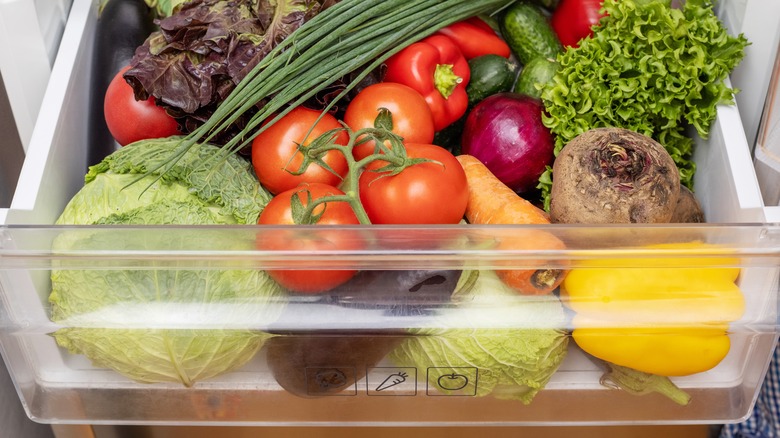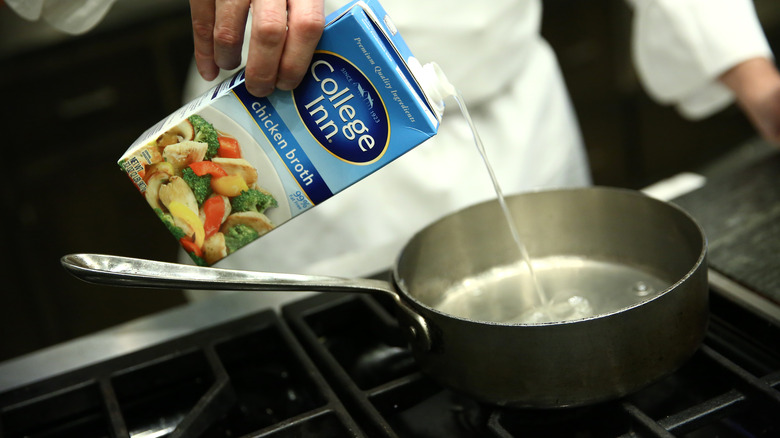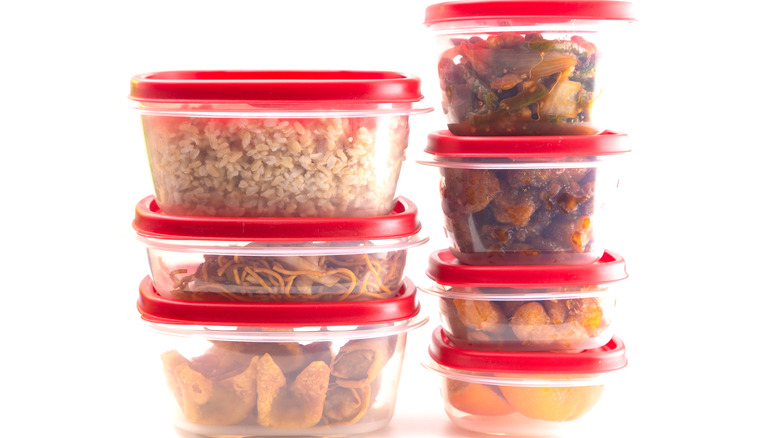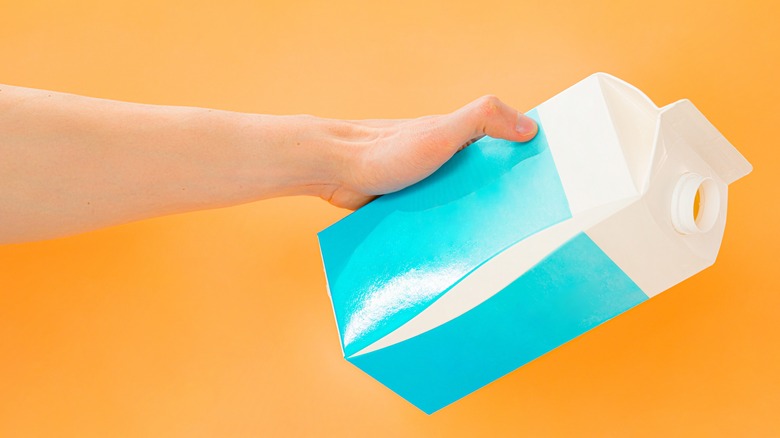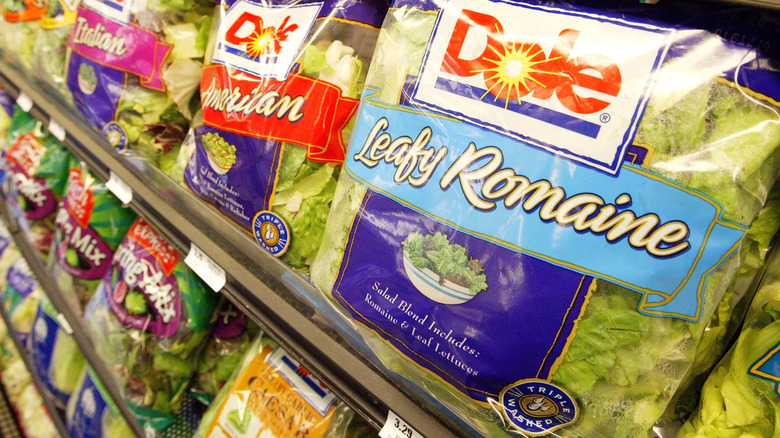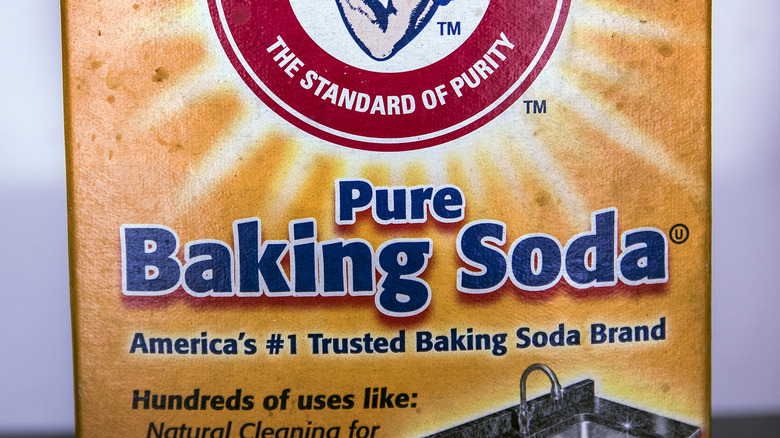14 Foods That Overstay Their Welcome In The Fridge
With the size of the modern-day refrigerator, it's easy for foods to get lost. Some foods should never be refrigerated, while many can be but may only last for a short time. Foods that have overstayed their welcome cause odors in the refrigerator and can make you sick if they've gone too far.
You should deep clean your refrigerator every few months; however, it doesn't hurt to check every week to see if any good food has gone bad. Leftovers, takeout, produce, and many other items go rancid quickly. It's easy to forget some foods in the fridge, especially if you have a deep refrigerator and things keep getting pushed toward the back. Then there are the products that aren't as popular or not put into use often, that seem like they never go bad. But the reality is every food item does eventually. In this article, we'll discuss the 14 foods that overstay their welcome in the refrigerator, so you'll know what to toss and when.
Raw meat won't last long
It's helpful to stock up on meat when grocery shopping, so the weekday meals are ready to go. There's nothing more frustrating than going to cook dinner only to find all the meat is frozen. If you've ever tried to cook a chunk of frozen ground beef, it isn't fun, and many meats, like a roast or whole chicken, won't cook properly in a frozen state. Still, if you put raw meat in the refrigerator on Sunday, hoping it will make it to Friday, you may be disappointed — meat turns rancid quickly. The USDA advises that meats such as steaks, pork chops, and roasts should remain refrigerated for three to five days until you cook them or put them in the freezer. Other meats like seafood, chicken, turkey, and ground beef only have a refrigerated life of about one or two days before you cook or freeze it.
Play it safe with meat by freezing it when you get home from the grocery store or butcher unless you know you are cooking the meat within a day or two. You're better off forgetting to defrost something rather than being left with raw meat that isn't safe to eat.
Your condiments may be older than you think
Depending on the size of your family and your favorite things to eat, some condiments end up sitting in the refrigerator longer than expected. Have you ever noticed when you open the refrigerator, your faithful bottle of ketchup is always there? It's like it never runs out. Some condiments in a refrigerator are like that because they don't get used daily. The giant bottle seems like a great deal, but the reality is that if your mayo, ketchup, or mustard aren't used regularly, they may not be safe the next time you grab one for your sandwich hot dog.
Most condiments that remain unopened in the pantry last around 12 months, though some have a short shelf life even before opening (via Reader's digest). For example, wasabi expires after three months even when unopened, and mayo and hot sauces are done in 3 to 6 months. Once open and refrigerated, the expiration time for most of your condiments drops significantly, and many items, such as ketchup and mustard, should be tossed after a month.
Pickled doesn't mean forever
It's easy to think that once something is pickled it'll last forever. Unfortunately, it's not true. There are many types of pickles and they are all capable of spoiling; possibly sooner than you think. Even though there are several varieties according to the size, cut, and flavor, all pickles belong under one of two categories: canned pickles and refrigerator pickles.
Canned pickles (homemade or the jars you see at the store) go through the canning process, which includes a hot water bath. Sealed and stored properly, canned pickles can last unopened for years. The USDA writes that once they're opened and refrigerated, your canned pickles are only good for about one to three months.
Refrigerator pickles don't require a hot bath and are brined and then kept refrigerated. Once opened, they also are good for about one month. You'll know when your pickles are no longer safe to eat by the odd smells, unusual texture, and possibly some fizzing in the jar. Also, keep an eye out for a lid on the jar to bulge, which is another sign that there's a problem.
Soft cheeses mold quickly
Mold is a bit confusing when it comes to cheese. After all, it is sometimes used in the preparation of some beautiful cheeses, and in some in particular, mold is a part of the appearance, such as blue cheese. The thing is, when creating cheese, microorganisms are carefully and purposefully added in just the right amount. It's different than the mold that has built a home in last week's leftovers. Still, just because many cheeses need mold to survive, doesn't mean every cheese in your refrigerator that has green fuzzies growing on it is okay to eat. Hard cheese and soft cheeses react differently to bacteria and your hard cheeses last longer because of it.
A soft cheese like brie or ricotta, which contain a lot of moisture, naturally, grow bacteria quickly and aren't safe to eat once it's molded. Hard cheeses, however, last longer because without as much moisture, the mold doesn't penetrate the cheese as easily. Go ahead and cut the moldy area off of a hard cheese, such as Parmigiana or cheddar and continue to enjoy it. As soon as a soft cheese is molded, throw it away.
Try the sniff test with your lunch meats
Lunch meats, whether packaged or from the deli, usually come with an expiration date. Still, once the package is opened or if deli meat isn't eaten within a few days, it's best to use your senses to decide if the meat is any good, rather than trusting a date. Deli meat that came out for lunch and maybe sat around on the counter for a long time before it went back into the refrigerator will likely go bad quicker than meat that hasn't been served yet.
McLean Meats writes that when you buy packaged lunch meat, before it's opened, keep an eye on the used by date to make sure it doesn't get opened after that date; however, once it's opened plan on throwing out any packaged leftover lunch meat at around the three or five day mark. Your deli meat that is sliced fresh at the deli counter has a life of only three or five days as well when refrigerated. There's no hiding for deli and other lunch meat once it's gone bad since the odor gives it away. If you aren't sure whether or not your deli meat is still good, take a sniff and you'll know.
Don't leave open cans in the refrigerator
Just because canned foods have a long shelf life doesn't mean they continue to after they're opened and in the fridge. It seems like a simple solution to throw some plastic wrap or foil over a can after you've opened it; however, it's not the best idea. You may ruin the taste of your canned food if you don't put it in a different container.
Once a can is open, it's impossible to get a tight enough seal again, and contact with the air causes it to dry out, affecting the flavor. Also, with the help of air circulation surrounding the food, your canned goods easily absorb the odors around it, including the metal from the can, leaving you with metallic tasting leftover food. Your best bet is to always put leftover canned goods in a new container with a lid, just as you do other leftovers. After that, the USDA recommends you allow leftover canned food to stay in the refrigerator no longer than 4 days.
Sometimes you shouldn't eat your fruits and veggies
There isn't a hard and fast rule about how long produce lasts in the refrigerator. It varies depending on the type of produce it is, humidity levels, temperature, and how long ago the produce was picked. On average, most produce lasts a few days in the refrigerator, but your best bet is keeping an eye out for mold if you want to know if your produce is safe to eat.
Some produce is edible with a small amount of mold, but others aren't safe. Your produce that holds a lot of moisture is prone to mold quickly, compared to dryer produce. For example, strawberries and grapes, or moisture retaining vegetables, such as tomatoes and bell peppers attract mold quicker than broccoli or green beans.
So, how can you know if your molded produce is safe to eat? According to Healthline, if your produce is covered in an unidentifiable fuzzy substance and no longer looks like the fruit or vegetable you brought home, just toss it out. Too much mold can make you sick and isn't worth the risk. Also, if it's a softer type of produce, meaning one that has a lot of moisture, throw it away even if there is only one spot. Mold and bacteria love moisture, it will have likely spread further than you think. You can sometimes salvage "harder" produce or produce with less moisture by simply cutting the piece of mold off of the fruit or veggie.
How long does opened broth last?
Sometimes after opening chicken or beef broth, there's a lot left over. You might only need a splash for a recipe, or half the amount you opened for a soup. Naturally, you stick the leftover broth in the refrigerator. However, when you go to reach for it a week later to make something else, is it any good to use? Still Tasty writes that as long as the chicken or beef broth is refrigerated at all times after it's opened, it's safe to use for about 4 to 5 days.
If you aren't sure how long its' been and are wondering if the broth is still edible, you can usually tell by the way it looks and smells. Broth that has gone bad grows mold and you'll notice it floating in the broth or on the sides or edges of the container. Bad beef or chicken broth will also have an unpleasant odor.
How long has that salad dressing been in there?
After going through the effort of making your own salad dressing, you'll want to store it as long as you can. Unfortunately, without preservatives, it won't last as long as the store-bought stuff. Still, anything homemade is usually worth it. Many people feel homemade salad dressing is much tastier than store-bought dressings, even though it only requires a few ingredients.
For the most part, your homemade salad dressings are only good for a few days (3 to 4) (via OXO). However, vinaigrettes may last for a few weeks unless they contain fresh garlic, which when mixed with oil is a magnet for bacteria and mold growth. As with many foods, your nose and eyes will tell you if the dressing is no longer any good. Look for mold and sniff for foul or unappetizing odors, and you'll know if the dressing is still safe to consume. You're better off making a fresh batch of dressing if something seems off.
The weekly toss of leftovers
Leftovers are a blessing and a curse. They're so convenient yet they tend to take over the refrigerator. As items pile up in the fridge, leftovers tend to get pushed to the back, never to be seen again. Unfortunately, the brave soul who cleans out the refrigerator gets the joy of uncovering lost leftovers and sometimes a horrific amount of mold to go with it.
According to the Mayo Clinic, leftovers sealed in a container and stored in the refrigerator are safe for consumption for about 3 to 4 days. After that, you are increasing the risk of food borne illnesses, caused by the growth of bacteria. You might open a leftover at the five day mark and notice it looks fine and still smells good, but don't let that trick you. It may not yet be molded, but after that many days of sitting in the fridge as a leftover, your food is growing bacteria and can still make you sick. Label leftovers with a date if possible so you'll know how old it is.
Carefully store takeout food
Taking out food is a lifesaver when you don't have the time or desire to cook. However, you must be careful to not let your takeout food sit too long before you get it into the refrigerator. If you're picking up food and bringing it home to immediately refrigerate it, you should be okay; however, if you're eating some and then storing leftovers, or if you have quite a drive before it gets refrigerated, you may need to think twice about how far you travel for takeout.
Look at the time when you get your food and if you can't refrigerate your takeout within an hour or two after it's been cooked, then don't bother keeping those leftovers. If it's within the one-to-two-hour window, you may want to transfer your takeout to your own containers with lids before storing it all in the refrigerator. Some takeout containers don't seal all that well and allow air to sneak into your leftovers and dry them out or bring bacteria in.
No double dipping allowed
Don't be ashamed. We've all done it. You just want a little taste of a dip, so you open the refrigerator, take the lid off the chip dip, dip in the chip, and close it all back up. Or how about a little taste of the salsa now and then? It's not so bad, unless you do it again and again. Just as George Costanza got busted at a party for double dipping, there's no double dipping in the refrigerator either. Science has proven that it spreads bacteria, so take the time to remove a lid and pour food into an appropriate serving dish to eat it.
A research team at Clemson University performed a study and found that when a cracker was bit into, it contained 1,000 more bacteria per milliliter of water than a cracker that wasn't bitten. That means your saliva carries bacteria, and double dipping spreads it. This thought can also be applied to drinking out of the milk or juice carton now and then. Apparently, your mother was right. If you've been double dipping or sipping, throw that food away and break the habit.
Brown lettuce is not appealing
Prewashed lettuce is helpful when we want a salad; however, it won't last as long as a head of lettuce. A head of lettuce protects itself with all its layers. When the outer leaves are brown, often you can peel those off and reveal fresher leaves underneath because they've been protected. Bagged, prewashed lettuce is different. The leaves have no protection and they wilt quicker than a head of lettuce.
Still Tasty suggests that you eat up your prepackaged lettuce within two hours of opening it if it's sitting out at room temperature. It's easy to lose track of time when eating dinner or serving guests. However, bacteria love to multiply in temperatures that range from 40 degrees Fahrenheit to 140 degrees Fahrenheit, making your kitchen or dining room the perfect place to grow. Once opened, you're prewashed, packaged lettuce should last in the refrigerator for about 3 to 5 days, when stored upright and kept closed. If it's gone bad, prepackaged salad mixes are slimy and smell funky.
Eventually, you must replace the baking soda
Baking soda is one of the best ways to absorb odors in the refrigerator. The soda works well because molecules in the air react with it, causing the baking soda to soak up everything that comes its way, especially odors. You simply open up a box and place it on a shelf. Still, it's easy to lose track of how long a box has been in there. You should replace it about every three months for maximum freshness. After a few months, it's really just sitting there and no longer absorbing odors. Or worse, it's holding onto bad odors, and you'll smell them in the refrigerator.
Never consider using your odor absorbing box of baking soda as a quick fix in a recipe. It's right there, open in the refrigerator, and can be tempting to grab a quick spoonful rather than digging through the pantry for your baking supply of soda. However, you really shouldn't. Once the baking soda has absorbed nasty odors in the fridge, those odors can transfer as taste into whatever you're baking. You don't want homemade bread that tastes like leftover Chinese food.
